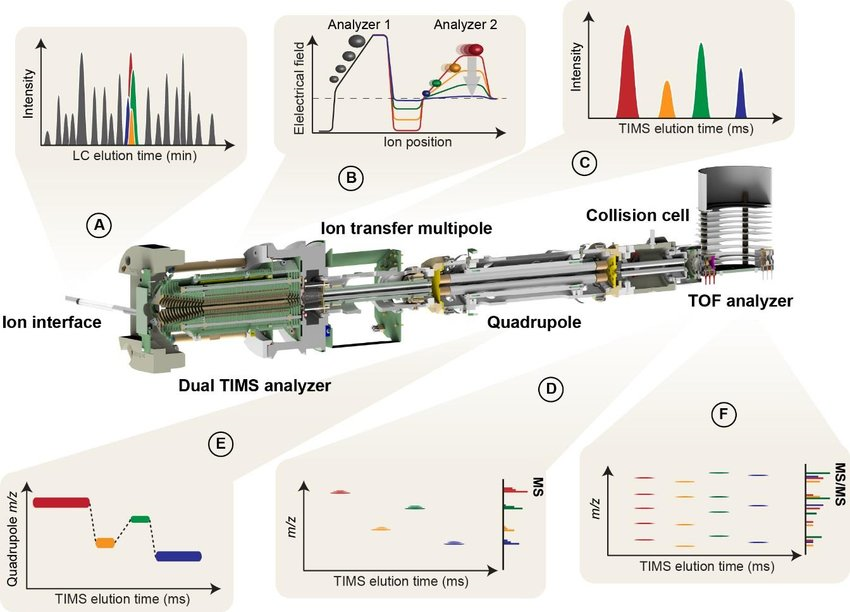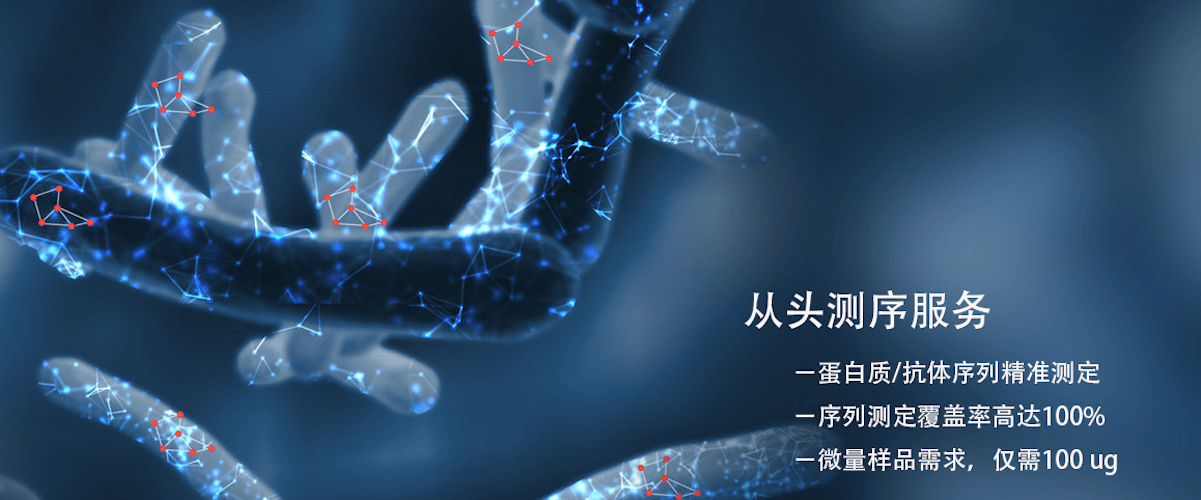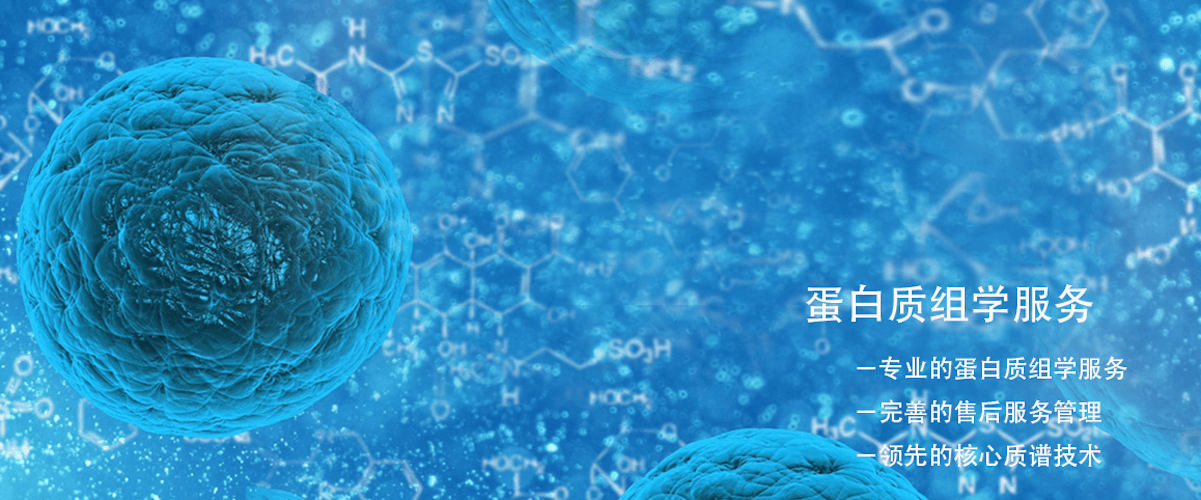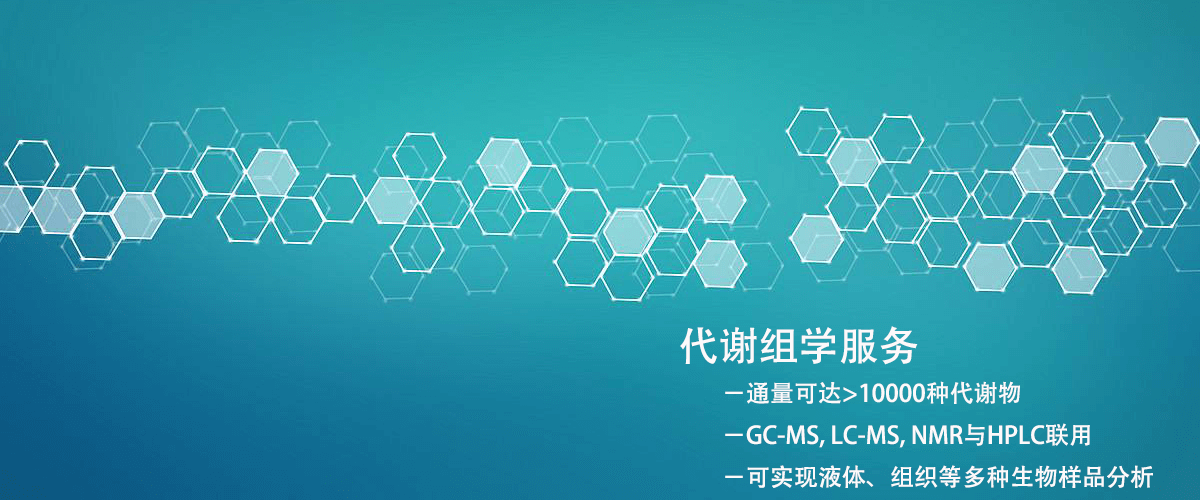4D Proteomics
The basic principle of mass spectrometry-based proteomics is to analyze the physicochemical properties of ions in the sample. This analysis, based on the mass spectrum and related information of the sample, yields qualitative and quantitative results. Currently, proteomics mass spectrometry generally identifies and quantifies peptides and proteins based on three dimensions: retention time, mass-to-charge ratio (m/z), and ion intensity, known as 3D proteomics. 4D proteomics adds a fourth dimension, ion mobility, to the 3D proteomics framework. This additional dimension separates ions based on their shape and cross-section, allowing for the differentiation and identification of peptides with very small m/z differences, thereby enabling the detection of low-abundance protein signals. 4D proteomics uses the timsTOF Pro mass spectrometer, combining PASEF (Parallel Accumulation Serial Fragmentation) and TIMS (Trapped Ion Mobility Spectrometry), to repeatedly measure the collision cross-section (CCS) of all detected ions, allowing for faster and more sensitive protein qualitative and quantitative analysis.

Meier, F. et al. Mol Cell Proteomics. 2018.
4D Proteomics
Biotech Pack provides 4D proteomics research services based on the timsTOF Pro, supporting studies in trace sample proteomics, large cohort medicine, and high-throughput modification proteomics.
About the Sample
1. If you are providing a co-IP sample, the protein amount should be around 2-5 µg. Please ensure that the protein sample does not contain detergents (such as SDS) or high oxygen concentration; alternatively, you can send the beads containing the protein sample directly to us, and we will handle the subsequent experiments.
2. If you are providing tissue samples, please ship them on dry ice. Animal samples should be more than 200 mg, blood samples at least 1 ml (use EDTA for anticoagulation in plasma), serum 0.2-0.5 ml, urine 2 ml, plant samples at least 1 g, cell samples 1 x 10^7 cells, yeast, microorganisms, etc. dry weight 200 mg.
3. If you are providing protein samples, ensure the total protein amount is above 50 µg; standard tissue or cell lysis solutions can be used for protein extraction.
4. Sample Transportation: Please use sufficient dry ice for transport and choose a faster delivery method to minimize sample degradation during transit.
Chinese/English Project Report
In the technical report, Biotech Pack will provide you with a detailed bilingual (Chinese/English) technical report, which includes:
1. Experimental procedures (Chinese/English)
2. Relevant experimental parameters (Chinese/English)
3. Mass spectrometry images
4. Raw data
5. Proteomics analysis results
4D Proteomics One-Stop Service
You only need to place an order and send the samples
Biotech Pack's one-stop service completes: sample processing, machine analysis, data analysis, and project report
Related Services
Label-Free Quantitative Proteomics Analysis
Label-Based Protein Quantification Techniques - iTRAQ, TMT, SILAC
MRM/PRM Quantitative Proteomics Analysis
Absolute Quantification Analysis (AQUA)
SWATH Quantitative Proteomics Service
Post-Translational Modification Proteomics Analysis
Phosphorylation Quantitative Proteomics Research
Acetylation Quantitative Proteomics Research
Ubiquitination Quantitative Proteomics Research
Glycosylation Quantitative Proteomics Research
Methylation Quantitative Proteomics Research
How to order?





